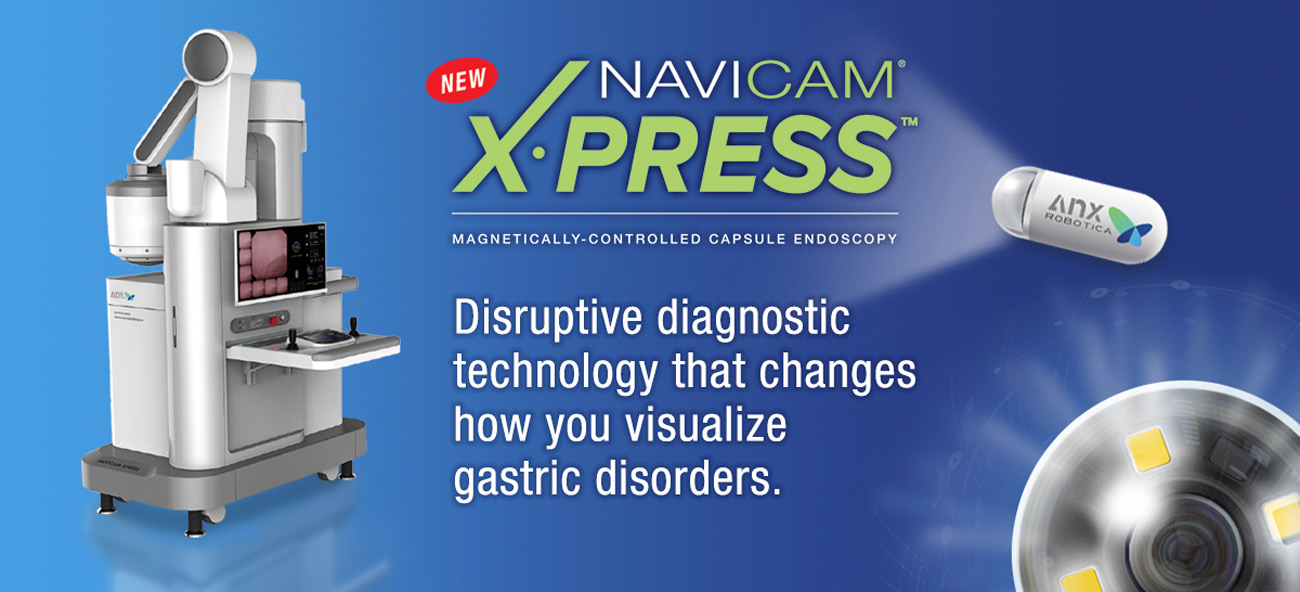
Disruptive diagnostic technology that changes how you visualize gastric disorders.
NaviCam® Xpress™ Stomach System
Introducing the NaviCam® Xpress™ Stomach System, an advanced technology that combines magnetic control with innovative software to give physicians a 360° view of the stomach. The system incorporates three-dimension translational and two dimension rotational control to guide precise movement of the capsule inside the stomach. The NaviCam® Xpress ™ System can be used in clinics and hospitals, including the ER setting and is intended for adults (>/= 6 years old) with a BMI less than ≤65 and a waist circumference ≤77 inches.
NaviCam® Stomach Capsule
The ingestible NaviCam® capsule is a pill-sized video camera that the patient swallows with water before starting the examination. Inside the capsule is a tiny camera that has its own light source; it takes pictures of the patient’s stomach while its movement is controlled by the physician.
ESview ™ Software
In a Real-Time View Panel, the software displays the actual anatomical view, a recently captured image(s), and a toolbar for working with the NaviCam® Xpress™. In addition, on this same screen, images and videos taken during the procedure can be studied and exported while viewing the displayed images.
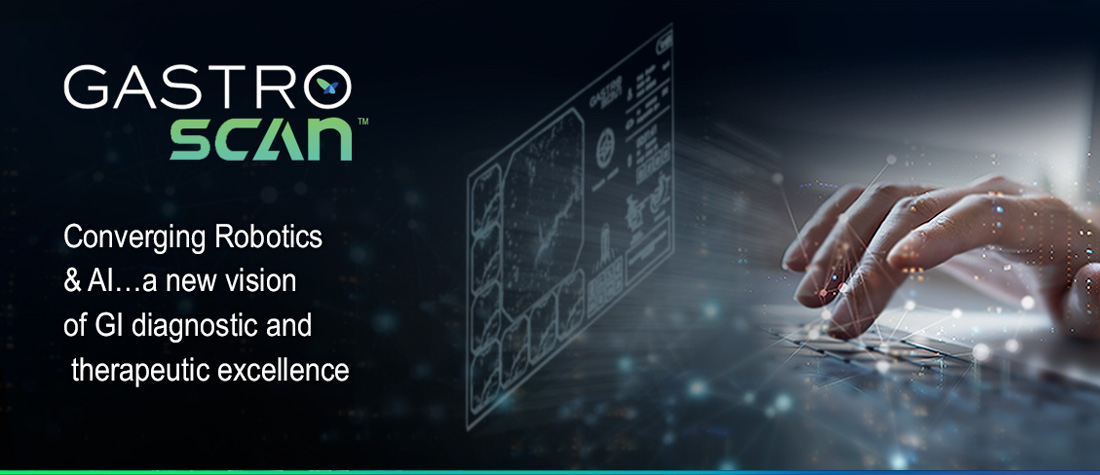
GastroScan™
GastroScan empowers users to initiate a predetermined sequence of device motion instructions seamlessly, allowing for sequential execution with minimal or no user intervention. The GastroScan feature offers three (3) default options, comprising two (2) predefined automated capsule scan functions and a third, predefined training mode. With GastroScan, the operator does not need to engage the joystick controls to manipulate the capsule in the stomach making complete visualization of the stomach seamless.
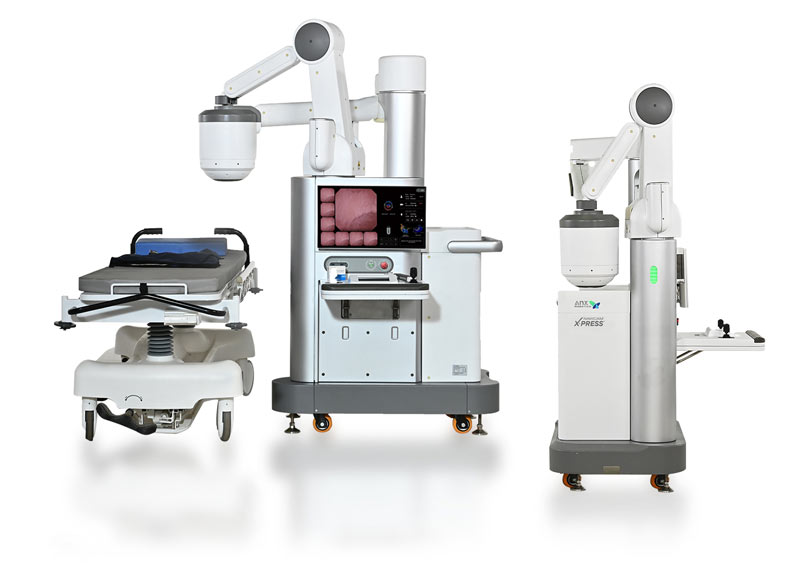
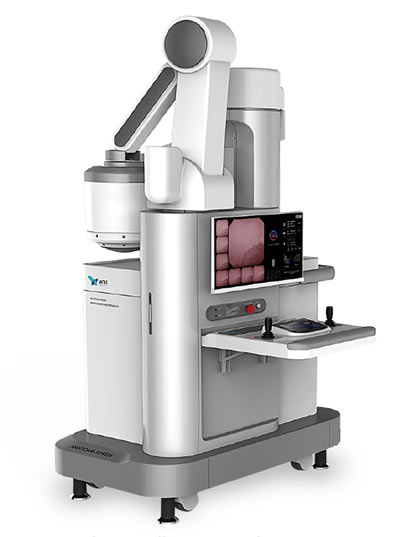
The compact footprint offers a choice of locations when using the NaviCam Xpress™.
Why MCCE?
Conventional gastroscopy allows for the accurate localization of lesions and is the most effective diagnostic modality for gastric diseases.
Sedation can improve patient compliance, but its cost has been a major concern, as well as discomfort and anesthesia-related adverse events that are encountered in a few patients after the procedure. 1
Traditional capsule endoscopy is propelled by natural motility and gravity of the digestive tract, including the stomach.
These limitations have traditionally prevented complete visualization of the gastric cavity.
1. Clinical Gastroenterology and Hepatology 2016;14:1266–1273
![]()
The Benefits of MCCE
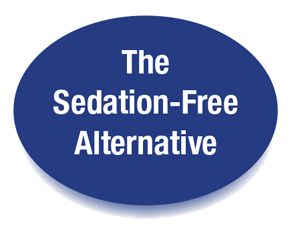
NaviCam® MCCE is a sedation-free alternative for high risk patients and those in which sedation is contraindicated due to co-morbidities or other health risks. Patients can resume normal activities following the procedure.
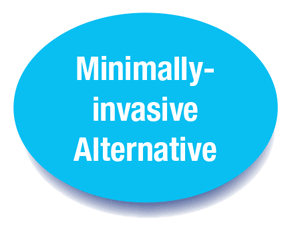
NaviCam® MCCE is a minimally-invasive alternative where EGD is likely to be of low yield. In the clinical study, there were 110 patients (31.4%) who required biopsy by gastroscopy. Therefore, nearly 70% of patients did not need an invasive gastroscopy after MCCE examination.1
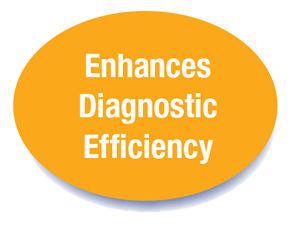
NaviCam® MCCE is an immediate way to address heartburn, stomach pain, etc. for patients on PPI with an instant ruling out of other conditions AND it takes only a little longer than EGD.
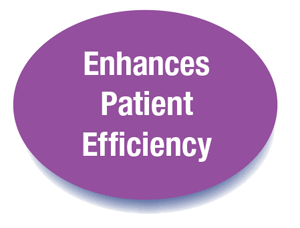
NaviCam® MCCE procedures can be scheduled the same day for patients presenting with abdominal pain or heartburn.
![]()
NaviCam® Clinical Evidence
In a landmark clinical study, MCCE (the NaviCam® Stomach System) was compared to conventional gastroscopy. The results were published in Clinical Gastroenterology and Hepatology 2016;14:1266-1273. The following are excerpts from that paper: Accuracy of Magnetically Controlled Capsule Endoscopy, Compared With Conventional Gastroscopy, in Detection of Gastric Diseases. Zhuan Liao, *et. al.
Background & Aims: . . . It is impossible to visualize the entire stomach with the passive capsule currently used in practice because of the large size of the gastric cavity. A magnetically controlled capsule endoscopy system (MCCE) has been designed to explore the stomach …
Results: … focal lesions in the whole stomach with 90.4% sensitivity (95% confidence interval [Cl], 84.7%-96.1%) … detected focal lesions in the upper stomach (cardia, fundus, and body) with 90.2% sensitivity (95% Cl, 82.0%-98.4%) and 96.7% specificity (95% Cl, 94.4%-98.9%) … focal lesions in the lower stomach (angulus, antrum, and pylorus) with 90.6% sensitivity (95% Cl, 82.7%-98.4%) and 97.9% specificity (95% Cl, 96.1%-99.7% … (NaviCam®) did not miss any lesions of significance (including tumors or large ulcers).
Discussions: MCCE could be a reliable filter test to stratify patients into those without relevant lesions not requiring further invasive methods, such as gastroscopy.
In this study, there were 110 patients(31.4%) who required biopsy by gastroscopy. Nearly 70% of patients did not need an invasive gastroscopy after MCCE examination. Second, MCCE would be a promising alternative for high-risk patients with peptic ulcers or gastric cancer, ensuring that early lesions would be detected. Conclusions: … NaviCam® detects focal lesions in the upper and lower stomach with comparable accuracy with conventional gastroscopy … is preferred by almost all patients, compared with gastroscopy, and can be used to screen gastric diseases without sedation.
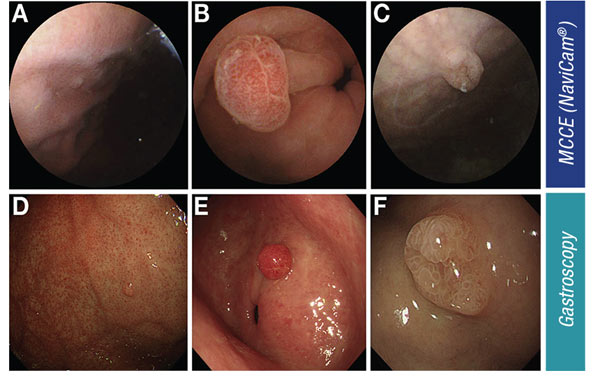
Figure 1 Representative polyps observed 011 conventional gastroscopy and MCCE. /A-C) MCCE examination and /D-F) gastroscopy.
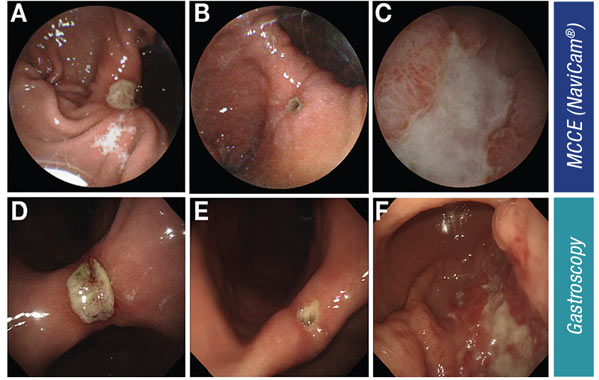
Figure 2. Representative ulcers observed on conventional gastroscopy and MCCE. /A and B) Benign ulcers observed by MCCE, (CI malignant ulcers observed by MCCE, and (D-F) the corresponding ulcer images observed /Jy gastroscopy.
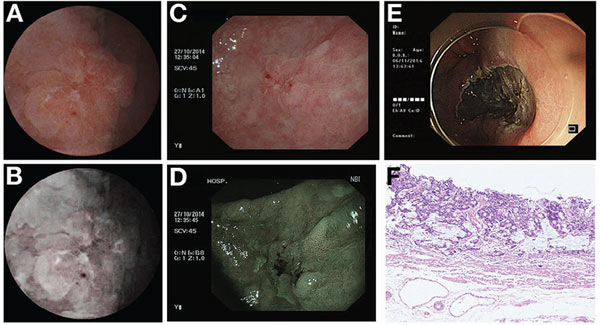
Figure 3. Early gastric cancer was observed on MCCE and conventional gastroscopy. /A) MCCE. /8) narrow-band imaging by MCCE, (C) gastroscopY, (DI narrow-band imaging by gastroscopy, (E) endoscopy submucosal dissection, and /F) pathology.
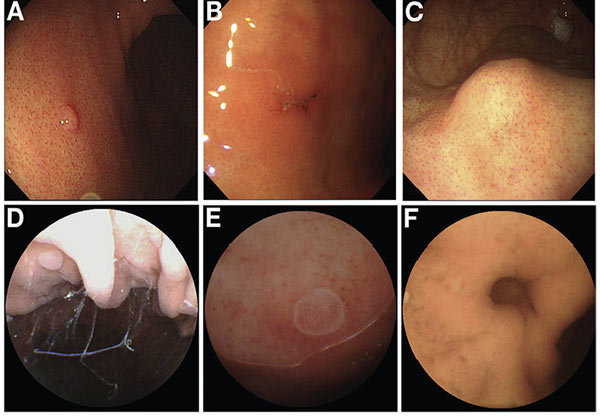
Figure 4. Representative images illustrating gastric focal lesions missed by MCCE or gastroscopy. Upper panel: lesions missed by MCCE. (A/ Polyp, (Bl small ulcer, and (C) submucosal tumor. Lower panel: lesions missed by the first gastroscopy. (D and E) Polyps and /F) gastric diverticulum.
![]() Download
Download
NaviCam® Express PDF
